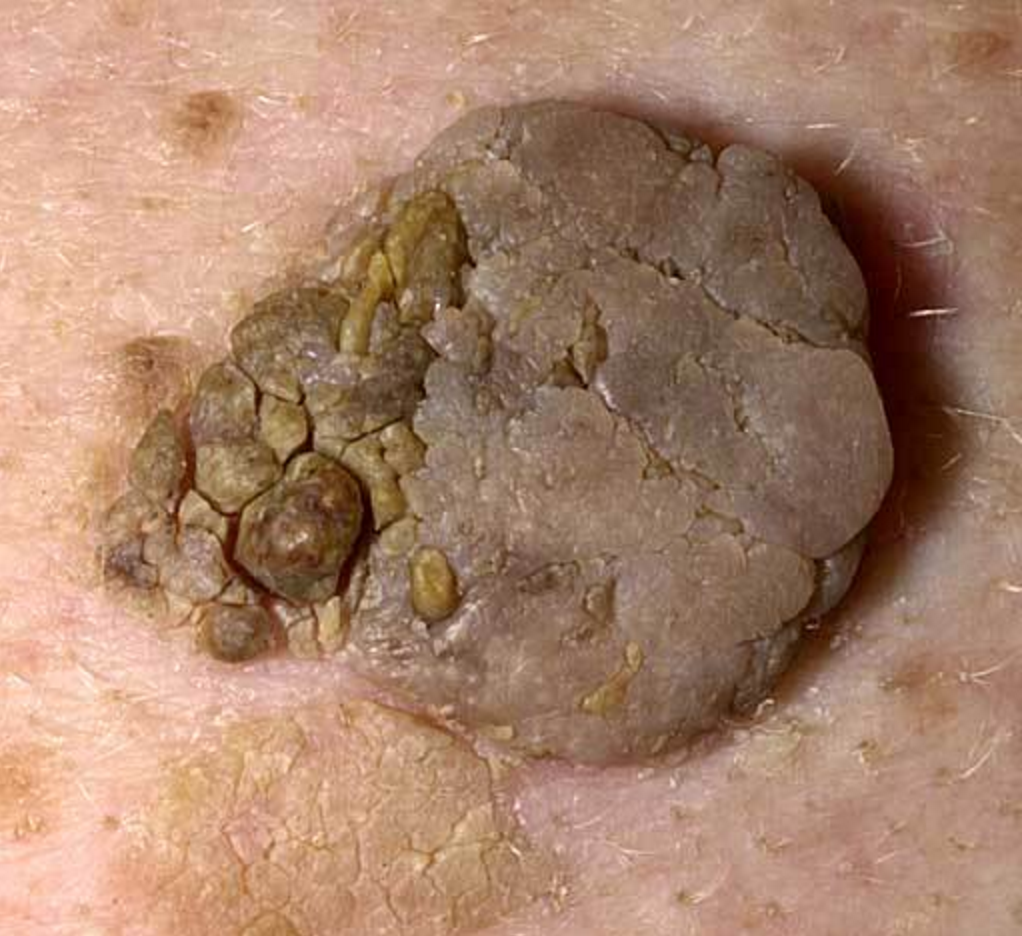Some years ago I worked in a large medical centre that was opening a skin cancer clinic. As soon as they moved in, the doctor running the clinic came over and introduced himself,
“I love working in clinics where there are physio’s – you guys get to see people naked all the time”
Just a little taken aback, I agreed, and shook his hand.
At the dermatological coalface

What he meant of course, was that as physiotherapists we have a unique opportunity to see skin that is often covered, and importantly, often out of sight of the people who own it.
After the introduction, I was given a quick lesson in what to look for when it comes to the plethora of skin lesions and an invite to send any patients over for a free check from the experts.
The thing that has always stuck in my mind is that the scary looking, large, crusty eruptions were frequently quite benign seborrhoeic keratoses, while skin cancers were often subtle beasts that looked quite harmless.
Do you know your naevi from your dermatofibromas?
If you answered no to the above question, there is a great piece over at The Conversation today from a couple of experts that is useful reading for any clinician at the dermatological coalface;
Common lumps and bumps on and under the skin: what are they?
As we age, the smooth skin of childhood gives way to all sorts of mysterious lumps and bumps. In a high-UV environment like Australia, we need to be very alert to the possibility of skin cancers. But most of the skin lumps we develop will be benign. Here are some of the most common, and how to tell them apart.
When to get it checked
Any lump, bump or lesion on your skin is worth showing to a doctor if it’s worrying you, but there are some red flags that should prompt you to make the appointment sooner rather than later.
A newly appeared mole or an existing mole that starts growing or changing colour should be checked. If the lesion bleeds very easily – at a touch – get it looked at as soon as possible. Painful lumps are another sign all is not right.
-Tim Cocks
Last chance to get on an Australian Explain Pain or Graded Motor Imagery Course for 2016
Gold Coast 30 September – 2 October Explain Pain and Graded Motor Imagery (Close to full, remaining tickets selling fast)
Perth 15 – 17 October Explain Pain and Graded Motor Imagery
EP3 events have sold out three years running in Australia, and we are super excited to be bringing this unique format to the United States in late 2016 with Lorimer Moseley, Mark Jensen, David Butler, and few NOI surprises.
EP3 EAST Philadelphia, December 2, 3, 4 2016
EP3 WEST Seattle, December 9, 10, 11 2016
To register your interest, contact NOI USA:
p (610) 664-4465
e noius@noigroup.com
Have you downloaded our new Protectometer App yet? Just search the App Store from your iPad for ‘Protectomteter’




comments